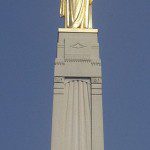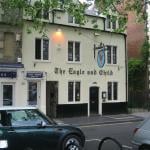
Further notes from John W . Welch, et al., eds., Knowing Why: 137 Evidences That the Book of Mormon Is True (American Fork: Covenant Communications, 2017):
“What Kind of Ore Did Nephi Use to Make His Plates?” (55-56)
At 1 Nephi 18:25, we’re told that Nephi found “all manner of ore, both of gold, and of silver, and of copper.” Then, in 1 Nephi 19:1, the text records that he made “plates of ore.”
There is no text between 1 Nephi 18:25 and 1 Nephi 19:1. There is only a chapter division — which was added by Elder Orson Pratt in 1879.
The proximity of the two verses suggests that the ore of which the plates were made might reasonably be supposed to have been composed of gold, silver, and copper — which, it so happens, are precisely the contents of tumbaga, a metal alloy known to have been used in pre-Columbian Mesoamerica and South America. (William Smith, the Prophet’s brother, at one point said that the plates were “a mixture of gold and copper.”) The earliest examples of tumbaga known to us date to roughly 400 BC, and were found in South America.
Back in the 1960s, the Latter-day Saint metallurgist Read Putnam suggested that the Book of Mormon plates were made of tumbaga, and he calculated that their weight would have been about 53 pounds — which fits the witness estimates ranging from 40 to 60 pounds. (Had they been of pure gold, they would have been much, much heavier.) More recently, the geologist and engineer Jerry Grover has hypothesized a specific composition of roughly 90 percent copper, 8 percent gold, and 2 percent silver, and a weight of 53-58 pounds. They would have had a golden appearance, as the witnesses testified, if the surface copper had been leached out.
“How Might Isaiah 48-49 Be ‘Likened’ to Lehi’s Family?” (57-58)
S. Kent Brown is convinced that Nephi’s choice of which chapters of Isaiah to cite reflects his specific experience in the escape from Jerusalem and the sometimes terrible journey down the Arabian Peninsula.
“Who Is the Servant Spoken of in Isaiah 49 (1 Nephi 21)?” (59-61)
Scattered throughout Isaiah 42-53 are four “servant songs.” There have been disagreements regarding their subject. Many scholars — and most Jews — think that they refer to Israel itself, personified. Christians have traditionally applied them to Christ.
Wilford Woodruff believed that they were being fulfilled in this last dispensation, in the latter days. And, indeed, they can be applied to Joseph Smith. Not, of course, that he is the Messiah. In fact, it’s very possible that they can rightly be applied to more than one individual.
“Whom Did Nephi Quote in 1 Nephi 22?” (62-63)
1 Nephi 22 features an extraordinarily complex interweaving of quotations from both Isaiah and Zenos, as well as at least one passage from another prophet, who is unnamed. The chapter is not merely a mishmash but indicates careful reading and planning.










